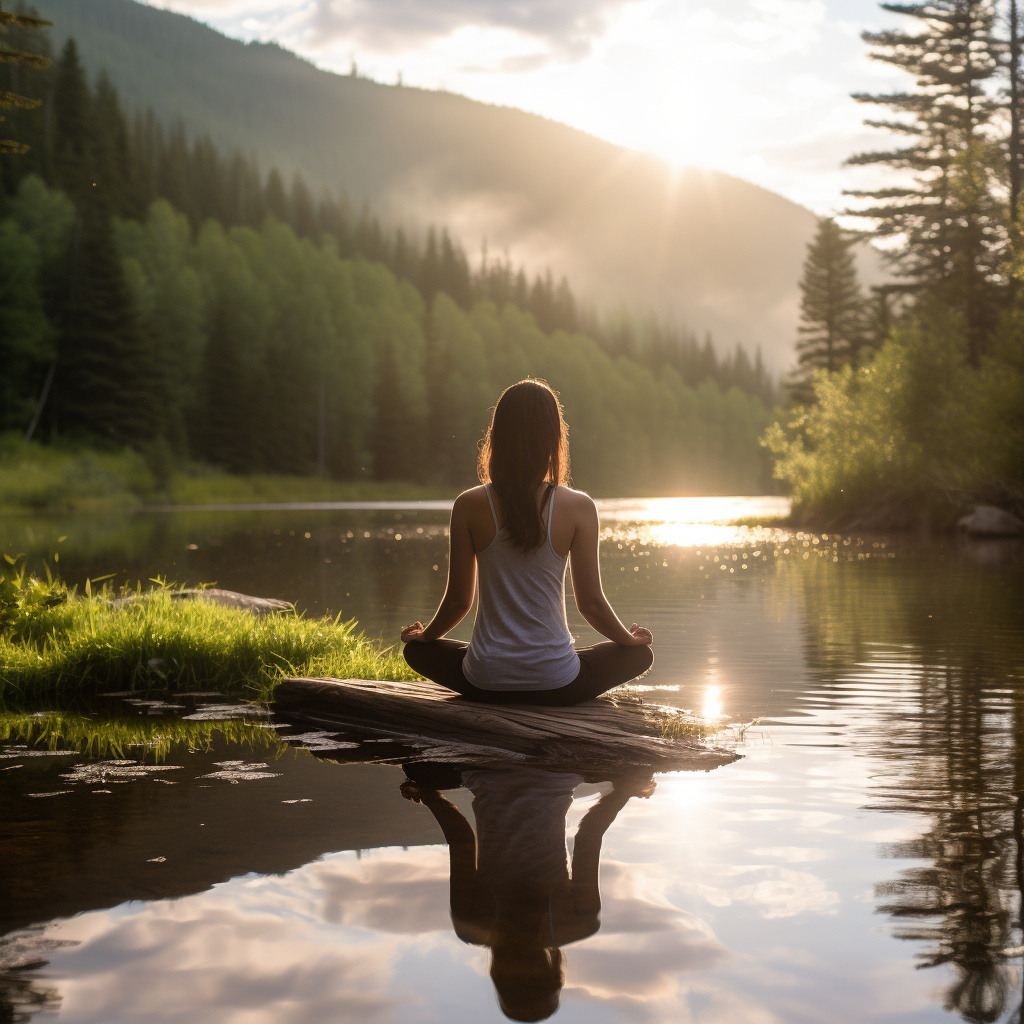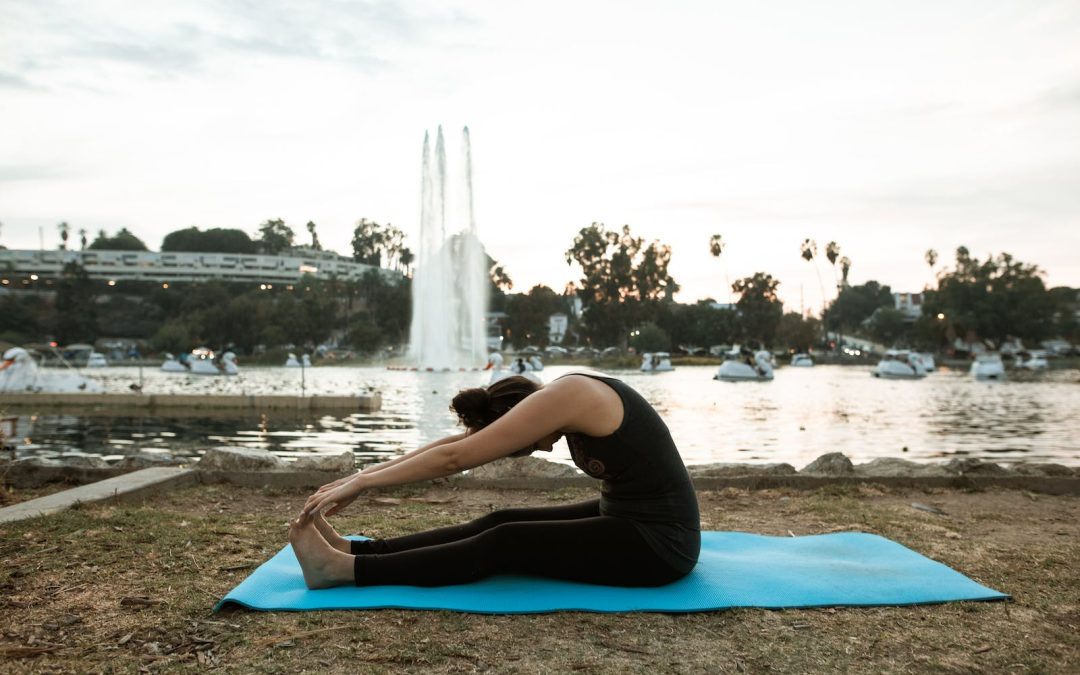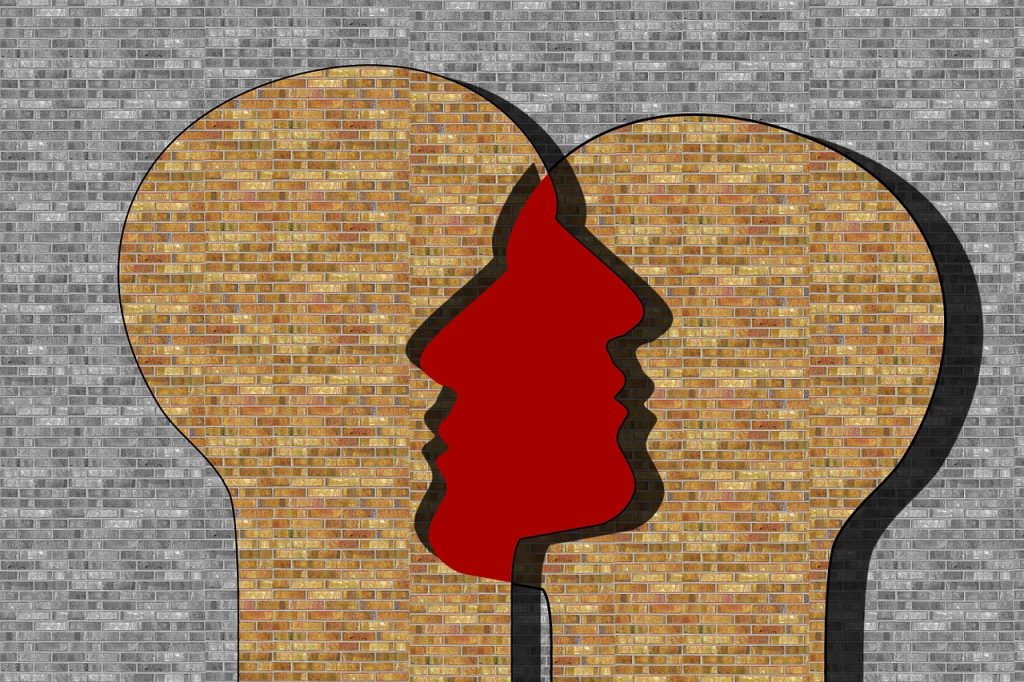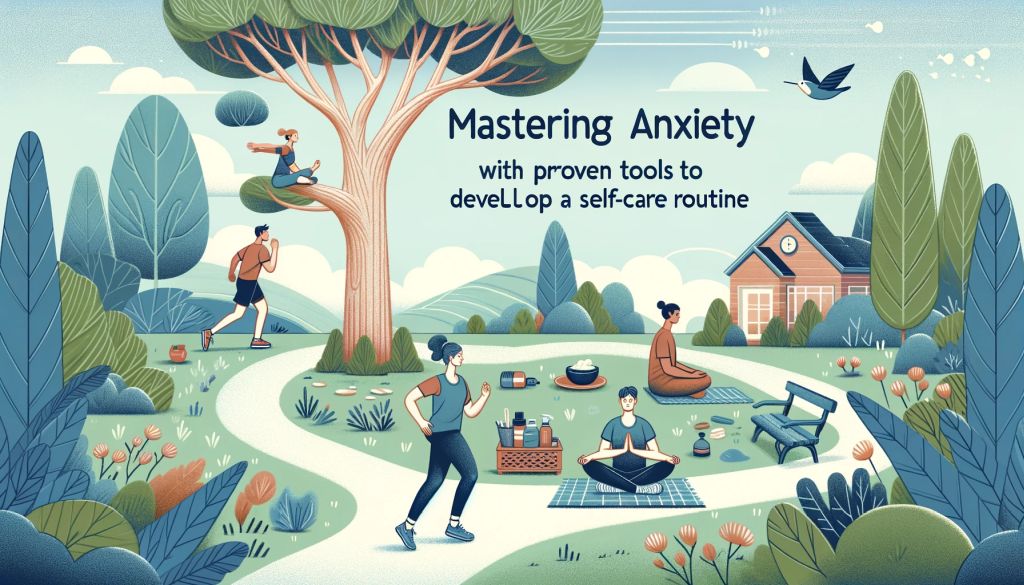
by Elizabeth Redd | Feb 14, 2024 | Health, Mental Health, Nutrition
Instilling the values of health and wellness in young minds lays the foundation for a lifetime of positive habits and choices. Embracing wellness within elementary schools is paramount, as it sets the stage for children to understand and value their health from a tender age. Through strategically designed health and wellness lesson plans for elementary students, educators are empowered to teach essential concepts such as nutrition, physical activity, mental health, and personal hygiene in an age-appropriate and engaging manner.
The incorporation of these lesson plans into the curriculum not only boosts students’ knowledge but also enhances their ability to make informed decisions about their well-being. By engaging in hands-on activities, interactive discussions, and integrating real-life scenarios, children become actively involved in the learning process, making the lessons more memorable and impactful.
Ready to kickstart your wellness journey? Sign up for our content to receive exclusive tips and updates. Take the first step towards a healthier, happier you! Join Our Community Today.
Innovative Strategies for Teaching Nutrition and Healthy Eating

Adopting innovative strategies for teaching nutrition and healthy eating is essential for capturing the interest of elementary students. Educators can harness a variety of tools and techniques to make the subject matter come alive. For instance, interactive games that involve meal planning or grocery store scavenger hunts can turn abstract nutritional guidelines into tangible, enjoyable activities. Additionally, incorporating storytelling with characters that make healthy food choices can resonate with younger students, making the concepts relatable and easier to internalize.
Another effective strategy includes the use of hands-on experiences such as growing classroom gardens or preparing simple, healthy snacks. These activities not only educate but also instill a sense of responsibility and connection to the food they consume. By understanding the journey of food from seed to plate, children are more likely to appreciate and choose nutritious options. Furthermore, integrating technology through apps or online resources can provide an interactive platform for students to track their eating habits and learn about the nutritional value of different foods.
Teachers can also invite guest speakers, such as nutritionists or local chefs, to discuss the importance of healthy eating and demonstrate cooking techniques. These experiences can reinforce the curriculum and provide students with real-world perspectives on the importance of nutrition.
Integrating Physical Activity into Daily Classroom Routines

Integrating physical activity into daily classroom routines is a pivotal approach to foster a culture of health and wellness among elementary students. Simple yet effective methods can be implemented to ensure students are moving and staying active throughout the school day. One strategy is to introduce short, energizing breaks between lessons, often referred to as ‘brain breaks’. These can include stretching, yoga poses, or quick dance sessions that not only invigorate the body but also sharpen mental focus.
Teachers can also incorporate movement into academic learning. For example, math lessons can involve physical tasks that require students to count steps or jumps, thereby blending kinesthetic activity with cognitive development. Similarly, lessons on geography or history can be paired with physical movements that simulate cultural dances or actions related to the topic at hand.
Another engaging way to integrate physical activity is through the use of story-based exercises where students can act out narratives or adventures, moving around the classroom or playground as part of the storytelling. This not only enriches their physical activity but also enhances their creative and literary skills. Moreover, setting up classroom design to encourage standing or movement, such as with standing desks or learning stations, can subtly promote continuous physical engagement.
By making physical activity a regular and expected part of the classroom environment, teachers help students associate movement with daily routine, setting the foundation for a lifelong appreciation of an active lifestyle.
Mental Health Matters: Building Resilience and Emotional Well-being
Addressing mental health is just as critical as physical health in developing well-rounded students. Mental health and wellness lesson plans for elementary students should focus on building resilience and emotional well-being. These plans could introduce mindfulness practices such as deep-breathing exercises and meditation, which can teach students how to calm their minds and manage stress. Activities like these help children become more aware of their emotions and develop coping strategies for dealing with anxiety and frustration.
Another essential component is fostering an environment where emotional expression is encouraged and supported. Teachers can facilitate this by setting aside time for students to share their feelings and experiences, perhaps through circle time or journaling activities. This practice not only helps to build empathy and understanding among peers but also strengthens each child’s emotional vocabulary and self-awareness.
Lessons that focus on resilience can include storytelling where characters overcome challenges, or role-playing scenarios where students navigate difficult situations. These methods allow children to see examples of perseverance and problem-solving, equipping them with the tools to face and adapt to various life challenges.
By prioritizing mental health education in the curriculum, educators are equipping children with a vital foundation for emotional well-being. This proactive approach in the formative years of elementary education can significantly impact the long-term mental health of students.
Cultivating Mindfulness and Stress Reduction Techniques for Children

Incorporating mindfulness and stress reduction techniques into health and wellness lesson plans for elementary students can have profound effects on their ability to concentrate, regulate emotions, and find calm in stressful situations. Teaching children simple mindfulness exercises, such as paying attention to their breath or noticing the sensations in their body, can be a powerful tool in fostering a sense of presence and peace.
One effective method is guiding students through a ‘mindful moment‘ at the start of each day or before tests and projects. This can involve a short period of silence, where students are encouraged to focus on their breathing and acknowledge their thoughts without judgment. As children practice these techniques regularly, they develop their capacity to manage stress and anxiety, paving the way for better learning outcomes and social interactions.
Another technique is the use of guided imagery or visualization, where children are led through a series of calming images or scenarios to promote relaxation. This can be particularly helpful in preparing for or winding down after high-energy activities. Additionally, incorporating gentle yoga or stretching exercises into the classroom routine can teach students how to connect with their bodies and release physical tension.
By teaching children how to mindfully engage with the world around them, educators are not just imparting knowledge—they’re nurturing the development of holistic, healthy individuals capable of handling life’s ups and downs with grace and composure.
Assessing the Impact: Evaluating Health & Wellness Outcomes in Students

Understanding the effectiveness of health and wellness lesson plans for elementary students is crucial to ensure that the programs are making a positive impact. Assessing health and wellness outcomes in students involves looking at both quantitative and qualitative data. This includes monitoring changes in students’ knowledge about health topics, improvements in their physical fitness, and observations of their behaviors and attitudes towards health and wellness.
Surveys and questionnaires can be administered to gather feedback from students about their learning and personal growth. Physical fitness tests can provide concrete data on the students’ improvements in areas such as endurance, strength, and flexibility. Additionally, teachers and parents can observe changes in students’ willingness to participate in physical activities, their food choices, and their use of mindfulness or stress-reduction techniques.
It’s important to celebrate successes and identify areas for improvement. Sharing these outcomes with the school community can also inspire and motivate others to support health and wellness initiatives.
Ready to kickstart your wellness journey? Sign up for our content to receive exclusive tips and updates. Take the first step towards a healthier, happier you! Join Our Community Today.

by Health And Healing AI | Dec 9, 2023 | Health, Mental Health
From Anxious to Assured – Unlocking the Secrets of Inner Calm

The Art of Calm – Effective Tools to Overcome Anxiety. Photo by geralt
Last year, I trembled in a crowded subway, my breath shallow.
Anxiety gripped me tightly. But today, I walk the same path with a serene mind, thanks to a few simple yet powerful tools.
This transformation wasn’t just luck but a journey of discovery and practice. I’m here to share the steps that led me from panic to peace.
Starting today, you’ll learn practical strategies to navigate anxiety’s fog and find your inner calm.
If you struggle with anxiety, you’re not alone.
Anxiety is a shared experience affecting millions of people worldwide.
It can manifest in many different ways, from mild worry to debilitating panic attacks.
Fortunately, there are many tools and strategies you can use to manage anxiety and find inner calm.

Memphis style illustration stress management concept.
“It’s not stress that kills Us; it is our Reaction to it.” – Hans Selye
My Take on This Quote
Stress is not our enemy; our response is critical.
This quote by Hans Selye emphasizes stress itself is not inherently harmful. Our stress reaction determines its impact on our health and well-being.
Recognizing that we can choose our responses empowers us to manage stress effectively. Control your reaction, not the stress.
What This Means for You
You hold the reins to your stress. Instead of eliminating stress, focus on cultivating resilience and adaptive responses.
This shift in perspective can transform stress from a threat to a challenge to navigate.
By developing mindfulness and emotional regulation, you can minimize the adverse effects of stress. Steer your reactions towards resilience and balance.

Peaceful-exercise-meditation-nature-engagement
Unveiling the Path to Peace: Mastering Anxiety with Proven Tools
One of the most important things you can do to manage anxiety is to develop a self-care routine.
It might include exercise, meditation, or spending time in nature. It’s also important to prioritize sleep, eat a healthy diet, and avoid substances that can exacerbate anxiety, such as caffeine and alcohol.
Taking care of your physical health can help you feel more grounded and resilient in the face of stress.
Another essential tool for managing anxiety is to develop a mindfulness practice.
Mindfulness involves paying attention to the present moment without judgment.
It can help you become more aware of your thoughts and feelings, which can help you recognize when you’re feeling anxious and take steps to manage it.
Mindfulness can also help you cultivate a sense of inner calm and peace, even during difficult circumstances.
Understanding Anxiety
If you’re reading this article, chances are you or someone you know is struggling with anxiety.
Anxiety is a natural stress response, but it can become overwhelming and disruptive to your daily life if left unchecked.
Understanding anxiety is the first Step towards managing it and finding inner calm.
Symptoms and Causes
Anxiety can manifest in a variety of ways, including physical symptoms like sweating, trembling, and rapid heartbeat, as well as psychological symptoms like fear, worry, and panic.
A range of causes, including stress, trauma, genetics, and environmental factors, can trigger these symptoms.
Anxiety and Depression
Anxiety and depression are closely related, and many people who struggle with anxiety also experience depression. Anxiety and depression often share similar symptoms, such as fatigue, difficulty concentrating, and feelings of hopelessness.
It’s essential to seek professional help if you’re experiencing symptoms of anxiety or depression.
Psychology Behind Anxiety
Anxiety is a complex psychological phenomenon that involves a range of factors, including the release of adrenaline and the activation of the sympathetic nervous system.
When you experience anxiety, your body goes into “fight or flight” mode, which can cause physical and psychological symptoms.
Learning to manage your anxiety involves understanding the psychology behind it and developing coping strategies that work for you.
Overall, understanding anxiety is an essential first step toward managing it and finding inner calm.
By recognizing the symptoms and causes of anxiety, as well as the psychology behind it, you can begin to develop effective strategies for coping with anxiety and regaining control of your life.

Overcoming Panic Attacks: Tools to Regain Control. Photo by Sam Carter
Developing a Mindful Routine
Incorporating mindfulness into your daily routine can be an effective way to manage anxiety and find inner calm.
By creating a consistent schedule that includes mindfulness practices, you can develop a routine that promotes relaxation and reduces stress.
Incorporating Mindfulness
There are many mindfulness techniques that you can incorporate into your daily routine.
A straightforward technique is to practice deep breathing exercises.
By taking slow, deep breaths, you can calm your mind and reduce feelings of anxiety.
You can also try progressive muscle relaxation, which involves tensing and relaxing different muscle groups to release tension.
Another effective mindfulness practice is meditation. You can start with just a few minutes daily and gradually increase your meditation time.
During meditation, you can focus on your breath or repeat a calming phrase to help quiet your mind.
The Role of a Consistent Schedule
Creating a consistent schedule with mindfulness practices can help you develop a routine that promotes relaxation and reduces stress.
Set aside time daily for mindfulness practices, such as deep breathing exercises or meditation.
You can also incorporate mindfulness into other activities, such as walking or practicing yoga.
By making mindfulness a regular part of your routine, you can develop a sense of calm and reduce feelings of anxiety.
Remember to be patient with yourself and start with small, manageable steps.
Over time, you can build on your mindfulness practices and develop a routine that works for you.
Relaxation Techniques for Stress Relief

Harnessing the Power of Mindfulness for Anxiety Relief.
If you are struggling with anxiety or stress, relaxation techniques can help you find inner calm.
Here are a few techniques that you can try to reduce stress and promote relaxation.
Deep Breathing Exercises
Deep breathing exercises can help you calm your mind and reduce stress.
To practice deep breathing, find a quiet and comfortable place to sit or lie down. Place one hand on your chest and the other on your belly.
Take a slow, deep breath through your nose, and feel your belly rise. Hold your breath for a few seconds, and then exhale slowly through your mouth.
Repeat this process for several minutes, focusing on your breath and letting go of distracting thoughts.
Progressive Muscle Relaxation
Progressive muscle relaxation involves tensing and relaxing different muscle groups to promote relaxation.
Start by sitting or lying down in a comfortable position. Tense the muscles in your feet and hold for a few seconds, then release and relax.
Move up to your calves, thighs, and so on until you have tensed and relaxed all your muscle groups.
This technique can help you release tension and reduce stress.
Yoga and Meditation
Yoga and meditation are powerful tools for reducing stress and promoting relaxation. Yoga combines physical postures with deep breathing and meditation to help you release tension and calm your mind.
Meditation involves focusing on your breath or a specific object to promote relaxation and reduce stress.
Both practices can help you find inner calm and reduce anxiety.
In conclusion, relaxation techniques can help you manage stress and anxiety and promote overall well-being.
Try incorporating these techniques into your daily routine to find inner calm and reduce stress.
Lifestyle Adjustments to Reduce Anxiety

Lifestyle Tweaks – Small Changes with Big Impact on Anxiety. Photo by mr lee
Managing anxiety requires a holistic approach that includes lifestyle changes.
Adjusting certain aspects of your daily routine can reduce anxiety and improve your overall well-being.
Here are some lifestyle adjustments that can help you find inner calm:
Exercise and Physical Activity
Regular exercise is one of the most effective ways to reduce anxiety.
Exercise releases endorphins, natural mood boosters that can help you feel more relaxed and positive.
Physical activity also helps you burn off excess energy and tension, which can contribute to feelings of anxiety.
Aim for at least 30 minutes of moderate daily exercise, such as brisk walking, jogging, or cycling.
You can also try yoga or other mind-body exercises that combine physical movement with relaxation techniques.
Healthy Sleep Habits
Getting enough sleep is essential for managing anxiety. Lack of sleep can exacerbate anxiety symptoms and make it harder to cope with stress.
Aim for at least 7-8 hours of sleep every night, and establish a regular sleep routine.
Avoid caffeine and alcohol before bedtime, and create a relaxing environment in your bedroom.
You can also try relaxation techniques such as deep breathing or meditation to help you fall asleep.
Importance of Hobbies
Engaging in hobbies and leisure activities can help you reduce anxiety by providing a sense of enjoyment and fulfillment.
Hobbies can also help you relax and take your mind off of stressful thoughts. Choose hobbies that
you enjoy, and that allows you to express yourself creatively.
Whether painting, gardening, or playing music, find activities that bring you joy and make you feel good.
By making these lifestyle adjustments, you can reduce anxiety and improve your overall quality of life.
Remember to be patient and consistent with your efforts, and don’t hesitate to seek professional help if you need it.
Cultivating Support Networks

Unraveling the Mystery – What Causes Anxiety and How to Counter It. Photo by Kelly Sikkema
Managing anxiety can be challenging, but it’s important to remember that you don’t have to do it alone.
Cultivating a support network can provide you with the tools and resources you need to cope with anxiety and find inner calm.
Here are some ways to build and maintain a support network:
Seeking Professional Help
One of the most effective ways to manage anxiety is to seek the help of a therapist or mental health professional.
A therapist can provide you with the tools and strategies you need to cope with anxiety and improve your overall mental health.
They can also help you identify the root causes of your anxiety and develop a personalized treatment plan to address them.
When seeking a therapist, it’s essential to find someone who specializes in anxiety and has experience working with patients who have similar symptoms to yours.
You can ask for recommendations from your primary care physician, friends, or family. You can also search for therapists in your area online.
Building a Personal Support System
In addition to seeking professional help, building a personal support system can also be beneficial in managing anxiety.
It can include friends, family members, or support groups. Having people you can talk to and rely on can provide emotional support and help you feel less alone.
When building a personal support system, it’s essential to communicate your needs and boundaries.
Let your loved ones know what you’re going through and how they can support you. You can also consider joining a support group for individuals with anxiety.
It can provide you with a sense of community and allow you to connect with others who are going through similar experiences.
Remember, managing anxiety is a journey, and it’s essential to have a support network in place to help you along the way.
Don’t be afraid to seek professional help or contact loved ones for support.
With the right tools and resources, you can find inner calm and improve your mental health.
Practical Tools for Everyday Calm
Managing anxiety can be challenging, but there are practical tools you can use to find inner calm.
Here are some techniques to help you stay focused and regulate your emotions.
Grounding Techniques
Grounding techniques can help you stay present and focused.
One technique is to focus on your senses. Take a few deep breaths and then focus on what you can see, hear, feel, taste, and smell.
It can help you stay in the moment and avoid getting lost in anxious thoughts.
Another grounding technique is to use physical sensations to calm your mind.
You can try pressing your feet firmly into the ground or holding a cold object like ice.
This can help you feel more connected to your body and less overwhelmed by your thoughts.
Focusing on Gratitude and Acceptance
Focusing on gratitude and acceptance can help shift your perspective and reduce anxiety. One way to do this is to keep a gratitude journal.
Each day, write down three things you are grateful for. It can help you focus on the positive aspects of your life and reduce stress.
Another technique is to practice acceptance. It means accepting your thoughts and feelings without judgment.
When you notice anxious thoughts, try to observe them without getting caught up in them.
Remember that thoughts are not facts; you can choose how to respond to them.
Self-Regulation
Self-regulation is an essential part of managing anxiety. It means learning to regulate your emotions and respond to stress healthily.
One technique is deep breathing. Take a few deep breaths, focusing on your breath as you inhale and exhale. It can help you feel calmer and more centered.
Another technique is progressive muscle relaxation. It involves tensing and relaxing each muscle group, from your toes to your head.
It can help you release tension and reduce anxiety.
Mental Well-Being
Taking care of your mental well-being is essential for managing anxiety.
It means getting enough sleep, eating a healthy diet, and staying active. It also means taking time for yourself, whether practicing mindfulness, reading a book, or spending time with loved ones.
Remember, managing anxiety takes time and practice.
Be patient with yourself, and don’t be afraid to seek help if you need it. With the right tools and support, you can find inner calm and live a more peaceful life.
Overcoming Negative Thoughts and Self-Compassion
If you struggle with anxiety, negative thoughts can be a common occurrence.
These thoughts can be self-critical or focused on the worst-case scenario. Over time, negative thoughts can lead to feelings of anxiety and even depression.
However, there are ways to overcome negative thoughts and promote self-compassion.
Awareness and Distraction
One way to overcome negative thoughts is to become aware of them.
When you notice a negative thought, try to identify what triggered it. Was it a specific situation or person? Once you identify the trigger, you can work on changing your response to it.
Another way to overcome negative thoughts is through distraction.
Try to distract yourself with a positive activity when you notice a negative thought. It can be anything from going for a walk to listening to music.
The goal is to shift your focus away from the negative thought and onto something positive.
Practicing Self-Compassion
Practicing self-compassion can also help overcome negative thoughts.
Self-compassion involves treating yourself with kindness and understanding.
Instead of criticizing yourself for your negative thoughts, accept them without judgment.
One way to practice self-compassion is through positive self-talk.
When you notice a negative thought, reframe it into a positive one.
For example, if you’re feeling anxious about a job interview, try thinking, “I’m going to fail,” instead of thinking, “I’m prepared and capable.”
Another way to practice self-compassion is through mindfulness.
Mindfulness involves being present in the moment without judgment.
When you notice a negative thought, try to focus on your breath and bring your attention back to the present moment.
In conclusion, overcoming negative thoughts and practicing self-compassion can help manage anxiety.
By becoming aware of negative thoughts and distracting yourself, you can shift your focus to positive activities.
Additionally, by practicing self-compassion through positive self-talk and mindfulness, you can accept your negative thoughts without judgment and promote inner calm.
Living with Anxiety: Embracing Inner Peace

Peaceful scene depicting mindfulness as an anxiety management. Photo by Dingzeyu Li
Living with anxiety can be overwhelming and challenging. It can affect your mental well-being and make it difficult to enjoy life.
However, it’s important to remember that anxiety is manageable, and some tools can help you find inner peace.
One of the first steps to embracing inner peace is to acknowledge your anxiety and accept it as a part of your life.
It can help you to let go of the shame and guilt that often come with anxiety.
Instead of fighting against your anxiety, try to observe it with curiosity and compassion. It can help you to develop a more positive relationship with your anxiety.
Another tool for finding inner peace is mindfulness.
Mindfulness involves paying attention to the present moment without judgment.
It can help you to become more aware of your thoughts and feelings and to respond to them more constructively.
You can practice mindfulness by focusing on your breath, body sensations, or the sounds around you.
In addition to mindfulness, many other tools can help you manage your anxiety and find inner peace. These include:
- Exercise: Exercise can help reduce anxiety by releasing endorphins, natural mood boosters.
- Self-care: Taking care of yourself can help you to feel more relaxed and less stressed. It can include getting enough sleep, eating a healthy diet, and engaging in enjoyable activities.
- Social support: Talking to friends and family can help you to feel less alone and more supported. You can also consider joining a support group or seeking professional help.
By embracing your anxiety and using tools like mindfulness, exercise, self-care, and social support, you can manage your anxiety and find inner peace.
Remember that it’s okay to ask for help and that you don’t have to face anxiety alone.
Managing Anxiety: Simple Tools for Your Inner World
Managing anxiety and finding inner calm can be achieved through various tools and techniques. Some effective methods include:
Mindfulness Meditation – Mindfulness meditation can help calm the mind and reduce anxiety. Second Step – https://www.second-step.co.uk/managing-anxiety-understanding-anxiety-and-finding-inner-calm/.
Breathing and Relaxation Techniques. Deep breathing exercises and relaxation techniques can activate the body’s relaxation response, reducing anxiety and restoring inner balance.
Cielo Treatment Center – https://www.cielotreatmentcenter.com/post/managing-anxiety-7-practical-tips-for-finding-peace-and-calm.
Stoic Lessons. Practicing stoicism provides practical tools and strategies to manage anxiety and navigate life’s challenges with composure.
Eightify – https://eightify.app/summary/personal-development-and-self-improvement/practical-stoic-lessons-managing-anxiety-finding-inner-calm.
Exercise – Regular physical activity is a natural way to reduce anxiety and promote well-being—strategies for Success – https://www.strategiesforsuccessaz.com/blog/7-effective-tips-for-managing-anxiety-and-finding-peace.
These tools, among others, can contribute to managing anxiety and finding inner calm.
Conclusion
Managing anxiety is an ongoing journey that requires patience, persistence, and a willingness to try new techniques.
By incorporating the tools and strategies discussed in this article, you can take control of your anxiety and find inner calm.
Remember to prioritize self-care, such as getting enough sleep, eating a balanced diet, and exercising regularly.
These practices can help reduce anxiety and improve your overall well-being.
In addition, consider incorporating mindfulness techniques into your daily routine.
Mindfulness meditation, deep breathing exercises, and visualization can all effectively calm your mind and reduce anxiety.
Don’t be afraid to seek professional help if you need it. Therapy, medication, and other forms of treatment can be beneficial for managing anxiety.
Finally, be patient and kind to yourself.
Managing anxiety is not always easy, but with time and practice, you can find the tools that work best for you and live a fulfilling life.

by Health And Healing AI | Aug 1, 2023 | Health, Mental Health, Natural Remedies
Embracing Continuous Learning in an Ever-Changing World*
Welcome
Pursuing knowledge and inspiration in a rapidly evolving world becomes paramount to personal and
professional Growth.
Lifelong learning is a powerful tool that empowers individuals to stay informed, adapt to new
challenges, and unleash their full potential.
This article explores the importance of embracing a lifelong learning mindset and how it can inspire us to
thrive in an ever-changing landscape.

Unveiling the Power of Knowledge: How Staying Informed Fuels Your Inspiration. Photo by Wyxina Tresse
Understanding Lifelong Learning: Empowering Growth
At its core, lifelong learning is the continuous process of seeking and acquiring knowledge, skills, and
experiences throughout one’s life. This process goes beyond formal education and encompasses self-directed learning, curiosity-driven
exploration, and the cultivation of new perspectives.
1. Embracing Curiosity and Flexibility
Lifelong learning begins with nurturing curiosity. The world offers an abundance of knowledge and
experiences waiting to be explored.
By staying open to the latest ideas and experiences, individuals can expand their horizons, challenge
assumptions, and foster creativity.
Flexibility in thought and action is a natural outcome of continuous learning, enabling individuals to
adapt to unexpected situations and navigate uncertainty quickly.
2. Empowering Personal and Professional Growth
Lifelong learning is the key to unlocking personal and professional Growth.
As individuals continuously expand their knowledge and skills, they become better equipped to seize
opportunities, overcome challenges and advance in their careers.
Pursuing new insights fosters a sense of purpose and accomplishment, empowering individuals to realize
their full potential.
3. Cultivating Resilience and Adaptability
In a world of constant change, resilience and adaptability are invaluable traits.
Lifelong learning nurtures these qualities by encouraging individuals to embrace change as an
opportunity for Growth.
By remaining adaptable and eager to learn, individuals can easily navigate transitions and thrive in
dynamic environments.
4. Broadening Perspectives and Fostering Empathy
Continuous learning exposes individuals to diverse ideas, cultures, and perspectives.
This exposure fosters Empathy and understanding, promoting collaboration and compassion in personal
and professional relationships.
Embracing different viewpoints enhances problem-solving abilities and enriches life experiences.
Staying Inspired: The Power of Lifelong Learning
Now, let’s explore how lifelong learning inspires individuals to excel in various aspects of life:
1. Professional Advancement and Innovation
Lifelong learning propels individuals to innovate and adapt to the demands of the professional world. It encourages acquiring new skills, knowledge, and technological advancements vital in a rapidly
changing job market.
By embracing lifelong learning, professionals can remain relevant, bring fresh perspectives to their work,
and contribute to the progress of their industries.
2. Personal Fulfillment and Growth
Learning is inherently tied to personal growth and fulfillment. When individuals pursue their interests
and passions, they find joy in learning.
Lifelong learners are often intrinsically motivated, finding satisfaction in their intellectual curiosity and accomplishments.
3. Social Engagement and Community Building
Lifelong learning fosters a sense of community and social engagement.
Through online courses, workshops, or group discussions, individuals can connect with like-minded
learners and form meaningful relationships.
This sense of belonging and shared pursuit of knowledge enhances overall well-being.
4. Encouraging a Growth Mindset in Education
In educational settings, promoting lifelong learning is essential.
Educators can instill a growth mindset that extends beyond formal schooling by emphasizing the joy of
learning and encouraging students to explore their interests.
Students who embrace lifelong learning are more likely to become self-directed learners and pursue
their passions throughout their lives.
Conclusion
Embracing lifelong learning is a transformative journey that nurtures curiosity, empowers Growth, and
fosters resilience.
Pursuing knowledge and inspiration enriches personal and professional lives, enabling individuals to
thrive in an ever-changing world.
By staying informed and inspired, we unlock the boundless potential within ourselves and contribute to
the progress of society.
Let us embark on this continuous learning journey, embracing the joy of discovery and the fulfillment of
Growth.
















